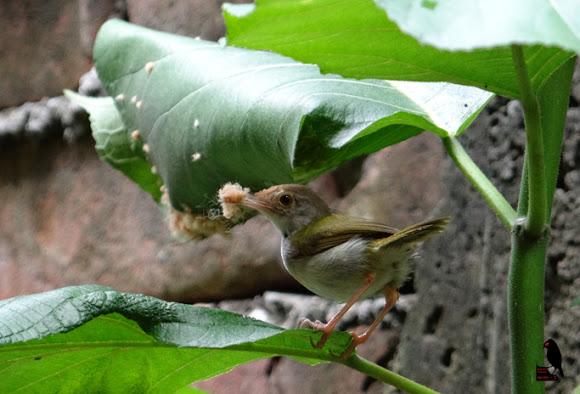I was sitting on my garden bench the other day and watched a small flock of Lesser Goldfinches land on my sunflower plants and peck at the leaves. What they were eating I didn’t know so when they left I searched the leaves for bugs. No bugs. Turns out the sunflower leaves were full of holes – birds were eating the leaves of the plants. The same with my kale. No wonder I could not find any insects. I wasn’t aware that goldfinches did that. Leaves are not very nutritious and provide only about half the calories of fruits and a quarter of that of insects. And they take a long time to digest. That’s why only about 3% of all birds eat leaves on a regular basis; these are called folivores.
One notable one is the Hoatzin, a chicken-like bird of the South American tropics. The Hoatzin is also known as the reptile bird, skunk bird, or stinkbird and is found in swamps, riparian forests, and mangroves of the Amazon and the Orinoco basins of Brazil, Venezuela, Bolivia, Guyana and Peru. The only member of its family and genus, it is especially known for having chicks that have claws on two of their wing digits and use them to crawl around through the vegetation shortly after hatching.

The hoatzin is a folivore – it eats leaves, clambering clumsily around the limbs of trees. The Hoatzin is known to consume the leaves of more than fifty species of plants. One study in Venezuela found that the hoatzin’s diet was 82% leaves, 10% flowers, and 8% fruit.
One of this species’ many peculiarities is a unique digestive system. Hoatzins use bacterial fermentation in the front part of the gut to break down the vegetable material they consume, much as cattle and other ruminants do. Unlike ruminants, however, the hoatzin has an unusually large crop, folded in two chambers, and a large, multi-chambered lower esophagus. The crop of the hoatzin is so large as to displace the flight muscles and keel of the sternum, much to the detriment of their flight capacity. Because of aromatic compounds in the leaves they consume and the bacterial fermentation, the bird has a disagreeable, manure-like odor (hence the name stinkbird).
Other birds make good use of leaves as well. There are a number of species of birds in tropical forests of Central and South America called “foliage gleaners” which search the forest floor and specialize in picking arthropods from under fallen leaves. Higher up in the tree the birds that glean insects off of leaves do so more or less equally from the top and bottom of the leaves. And then there are birds like some antbirds and ovenbirds that focus their feeding on dead leaves in the understory or canopy.
Leaves can also make a nice nest. The Common Tailorbird , as well as a few other species, sews together the edges of a curled leaf with fiber and builds a nest inside. The leaf is not damaged so that it stays alive and green, providing camouflage.

How about all those leaves that are beginning to fall on your lawn? Skipping the chore of raking leaves and just leaving them in place is good for the birds, according to Audubon.
Very interesting info. Thanks.